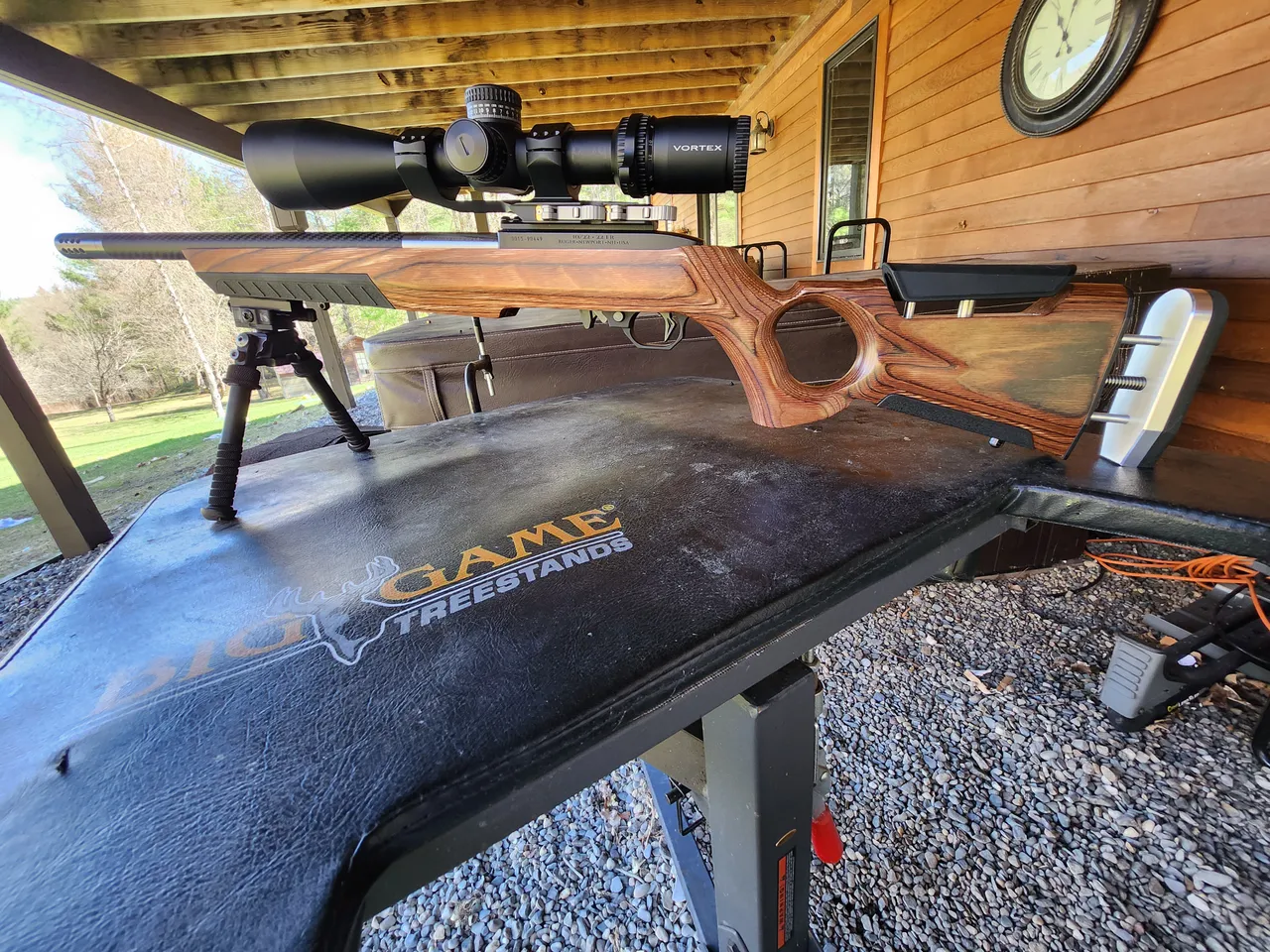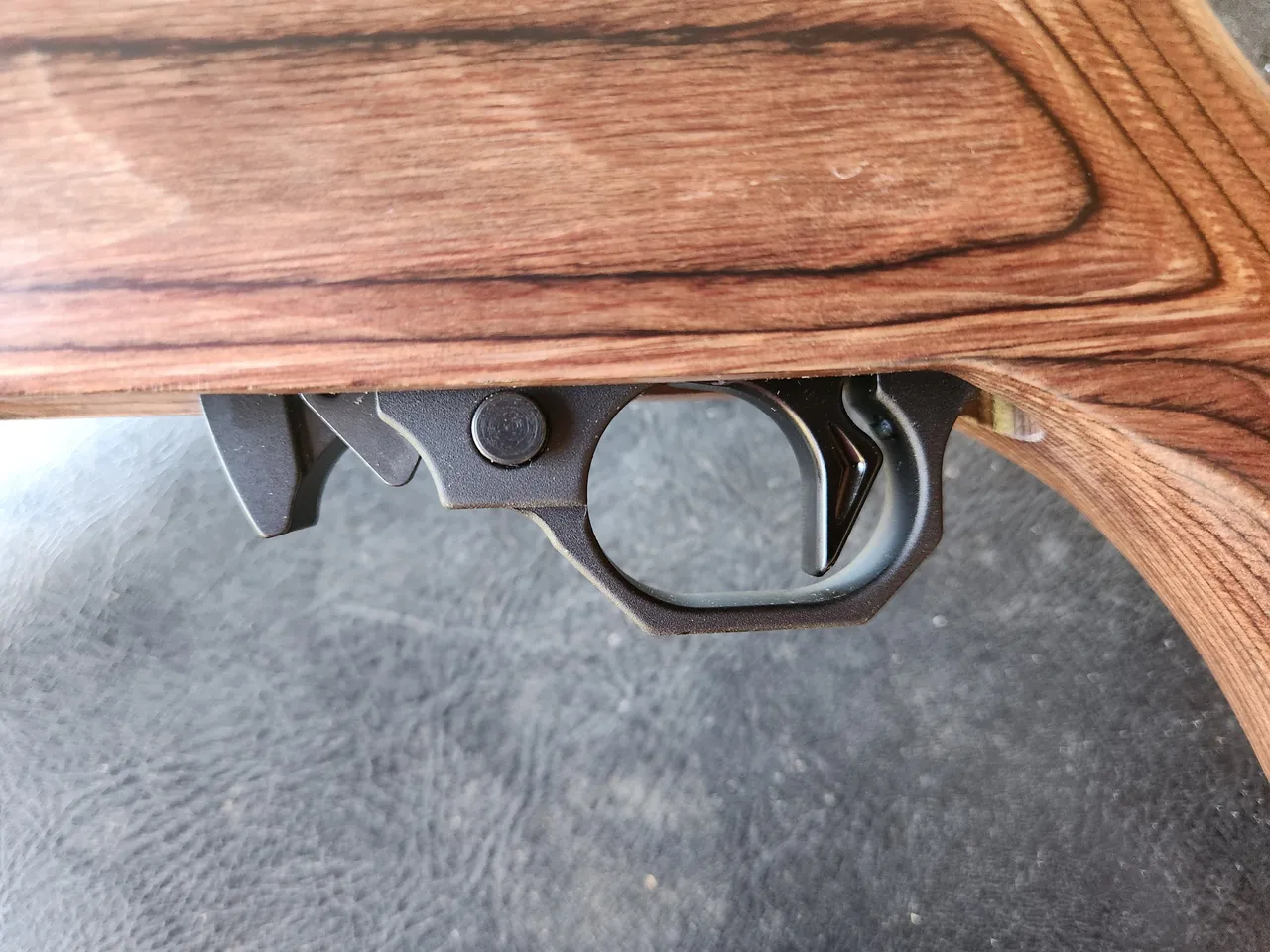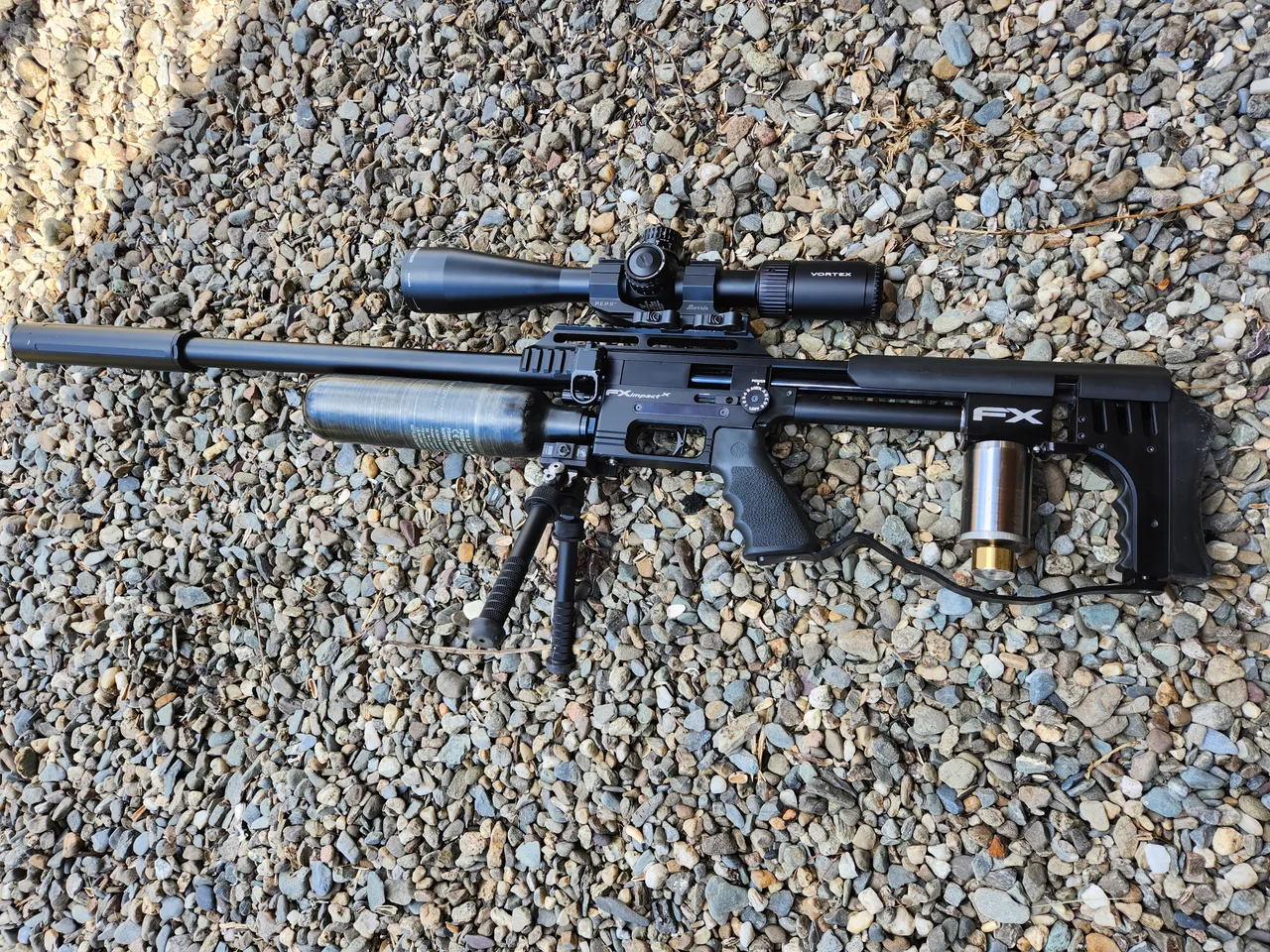It seems others are also out sighting in their pews. It's been a while since I've been out, we had a lot of snow on the ground last month and a lot of cold, wet yucky days to go with it. In the last couple weeks, snow is now gone and things have warmed up nicely. That means time to finish sighting in the rifles with re-mounted scopes to accommodate quick release mounts and thermal that I talked about in previous posts.

As part of that exercise, I decided to also re-check the zero on my rifles with suppressor vs. non-suppressor. A suppressor will often change the zero of a rifle slightly. But wait, those knowledgeable might say "that's not a suppressor". You're right. This, for the uninitiated, is a muzzle break. The suppressor part is yet to come.
First, let's talk technical pew stuff for a moment. I'll be doing this testing with a .22 caliber rimfire rifle. Many will ask, why do you need a muzzle break on a rimfire rifle. Well, reality is you don't. A muzzle break is generally to reduce recoil (which a .22 has none to speak of), and muzzle jump (which a .22 has very minimal). Why the muzzle break then? Well, simply because I like the look of it better than a simple small button to cover and protect the threads that are needed for the suppressor. (btw, it looks great on this carbon fiber barrel shown above, right?).
Now, let's talk suppressors. They are NOT "Silencers". As you will see in the video, even with these small calibers, they DO NOT make a weapon silent. What they do is reduce the noise of most weapons to be quiet enough to not damage your hearing by shooting without ear muffs or protective inserts. And they reduce noise to be more environmentally (and neighbor) friendly. I still can't grasp the concept of idiots that have made them illegal in many areas, or that require "tax stamps" or "special licenses" under NFA like they do here in the U.S. (Yes, mine is legally owned and operated).

Now this is a suppressor. It's a "Switchback" model I've described before in pistol posts, and can actually be reconfigured into 3 different lengths. This is shown full length mounted on to my customized Ruger Mark IV Tactical pistol. While I normally have it mounted to the pistol, it can also be removed (threaded) and place onto a rifle.

So today, we are going to test the zero of this rifle with both suppressor and muzzle brake to see if they are on zero, and to update our dope card if needed. This is a Ruger 10-22 rimfire. Or, it used to be a Ruger, lol.

The only remaining Ruger part is the action, the barrel, trigger assembly, springs, and trigger, have been replaced with Volquartsen, the stock replaced with a Boyd's AT One, and some other additional tweaks. It's not as accurate at distance as some of the fancy bolt guns, but it's a peach out to 50 yards, and still working on some tuning for further.

This was pretty well zeroed from my previous session, and I was able to jump right in.
So, here's the 50 yard target with the suppressor. Just a little high, but not bad. The orange squares are an inch (2.54 cm) wide/tall. That's 5 shots about the size of a nickel at 50 yards (half a football field).

So then we try going back to the muzzle brake. Not bad, but I think the suppressor shots were actually a bit tighter.

Then it's on to 100 yards. First shot with suppressor was good, but then started to spread a little with some vertical stringing. Not sure why, but something to test further.

Similar spreading at 100 yards with the muzzle brake, but more horizontal than vertical. Hmm, again not sure, not really much wind today. Maybe rifle needs cleaning?

So much for the .22 caliber, except I did record the video of what the different rounds sounded like suppressed.
Then it was on to the FX Impact PCP Air rifle. It's a .30 caliber pellet rifle and has become one of my favorite all around to shoot and play with. I wanted to compare it to the suppressed .22 (and update the zero with the new scope mount).


The scope on the PCP air rifle is a Vortex Viper PST 5-25x50. It's a nice scope, not top of the line or super expensive, but above the cheap grade for sure. The one thing I hate about it is the setting zero. I've since upgraded all my others to the Strike Eagle models which have a great simple way to set or reset zero. For this one you have to loosen three of these tiny set screws on the outer ring, then pull it off, and expose the inner dial. Then you have to loosen three more of these set screws on the inner dial, sight your rifle in to zero, tighten the three inner dial screws, re-attach the outer knob, and then re-tighten the three outer dial set screws. Arrgh.. and they are soooo tiny. The second smallest hex wrench in my set, and I've stripped out several of these stupid little things. At least they've fixed that problem in the newer models.

This FX Impact also has a 24 round magazine, which makes it very useful in the field. With the custom external plenum I added, I can actually get over two magazines, or over 50 shots with one fill of air.

Here is the 100 yard 6 inch plate shot with the FX Impact PCP rifle in the video. Rapid fire with all 24 hits on target. Yes, I had to record the full length, feel free to not watch it to the end once the PCP part starts, but it is soooo satisfying to hear that plate ring lol.

And what's kind of cool to us shooter geeks, the steel plates made these cool little flat lead pancakes under the target.


And then here's 24 shots from the PCP onto paper at 50 yards (because it's so fun and just too hard to not shoot the whole magazine!) Again a one inch (2.54cm) orange square.

I also did some video recording of various types of ammo with the suppressor to give some idea of the sound difference. For those that don't know, in order to get the most quiet out of the round, the bullet must not break the sound barrier (~1,100 feet per second or fps). Once it does, the bullet traveling through the air and breaking the sound barrier is what makes that distinctive cracking or echoing sound.
Check out the video, and even though the recording detracts from live listening, you'll still be able to clearly hear the difference between supersonic and subsonic ammo.
Ammo used was:
.22 rimfire - 36 grain CCI MiniMag hollow point = 1,260 fps
.22 rimfire - 40 grain CCI Standard Velocity = 1,070 fps
.22 rimfire - 40 grain CCI Subsonic = 1,050 fps
.30 PCP - 44.75 grain 850 fps. The sound of the action cocking is louder than the shot.
The suppressor definitely changes the sound as well, even if it doesn't fully "silence" the shot, it does make it quieter for the shooter near the muzzle, not needing hearing protection, but the bullet still makes the loud noise downrange when it breaks the sound barrier. The subsonic .22 and subsonic PCP rifles are MUCH quieter than the non-suppressed, but still not silent.
